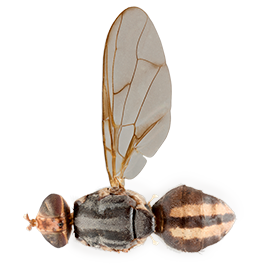Diagnosis
Morphological – adult
Features include:
- medium sized species
- large black facial spots present
- postpronotal lobes yellow (anterodorsal margins black)
- notopluera yellow
- scutum glossy black, mesoplueral stripe slightly wider than notopleuron, lateral and medial postsutural vittae absent, scutellum glossy black with extreme lateral margins yellow
- wing with a narrow pale fuscous costal band and narrow fuscous anal streak, a narrow pale fuscous tinge around r-m and dm-cu crossveins, cells bc and c with extremely pale fuscous tinge and microtrichia in outer ½ of cell c only
- abdominal terga glossy black except for two longitudinal orange-brown bands over terga II-V either side of a broad medial longitudinal glossy black band
- posterior lobe of male surstylus short
- female with aculeus tip needle shaped (Drew 1989; pers. comm. Drew 2010).
For potentially morphologically confounding species see ‘similar species’ and Bactrocera frauenfeldi complex and similar species.
Morphological – larvae
Information not available
Molecular
PCR-RFLP Test 1
BsrI: Does not cut
HinfI: Does not cut
HhaI: 680, 190
Sau3AI: 400, 450
SnaBI: Does not cut
SspI: 180, 620
Vspl: Does not cut
Approximate ITS1 fragment length – gel: 850 bp
PCR-RFLP Test 2
B. kirki cannot be distinguished from B. frauenfeldi or B. trilineola.
No distinctive restriction enzymes, but a combination of several can be chosen to distinguish this group from other Bactrocera and species in other genera.
See Restriction enzyme haplotype chart and Diagnostic restriction patterns.
Gallery
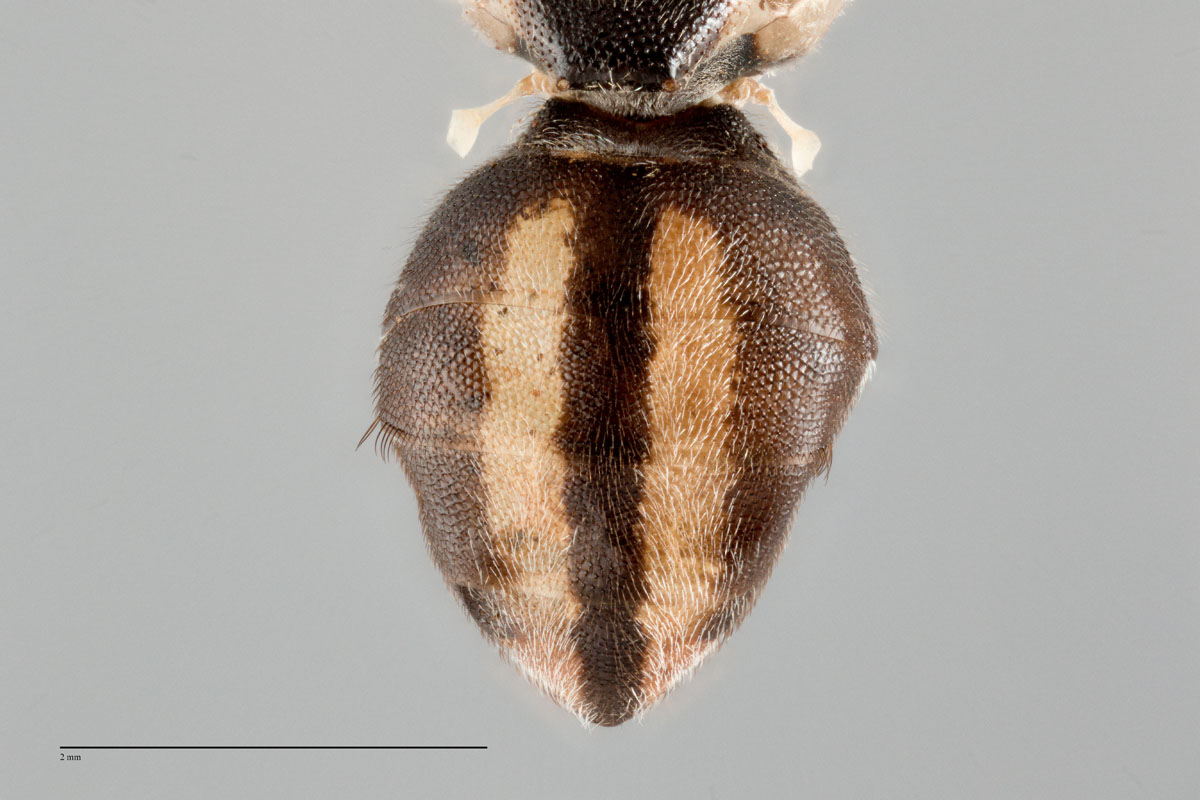 link
linkBactrocera kirki - Abdomen Dorsal KIR001 Classic
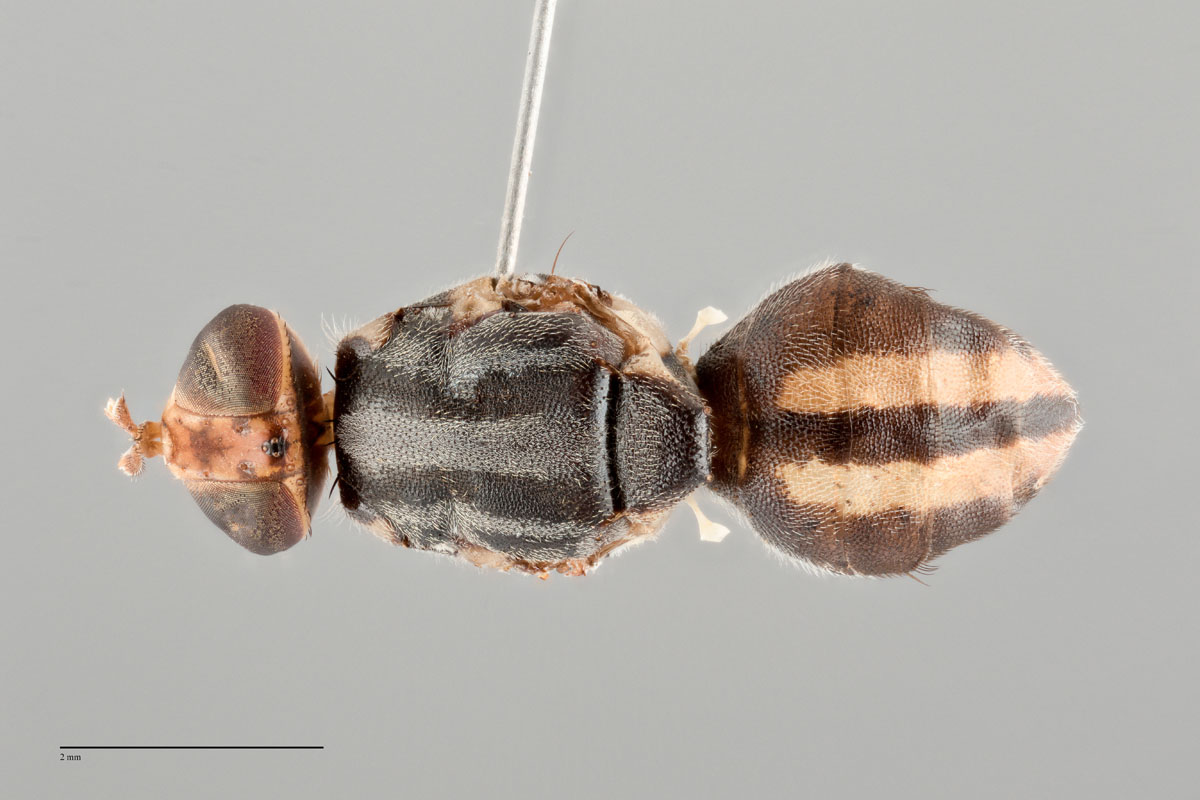 link
linkBactrocera kirki - Entire Body Dorsal KIR001 Classic
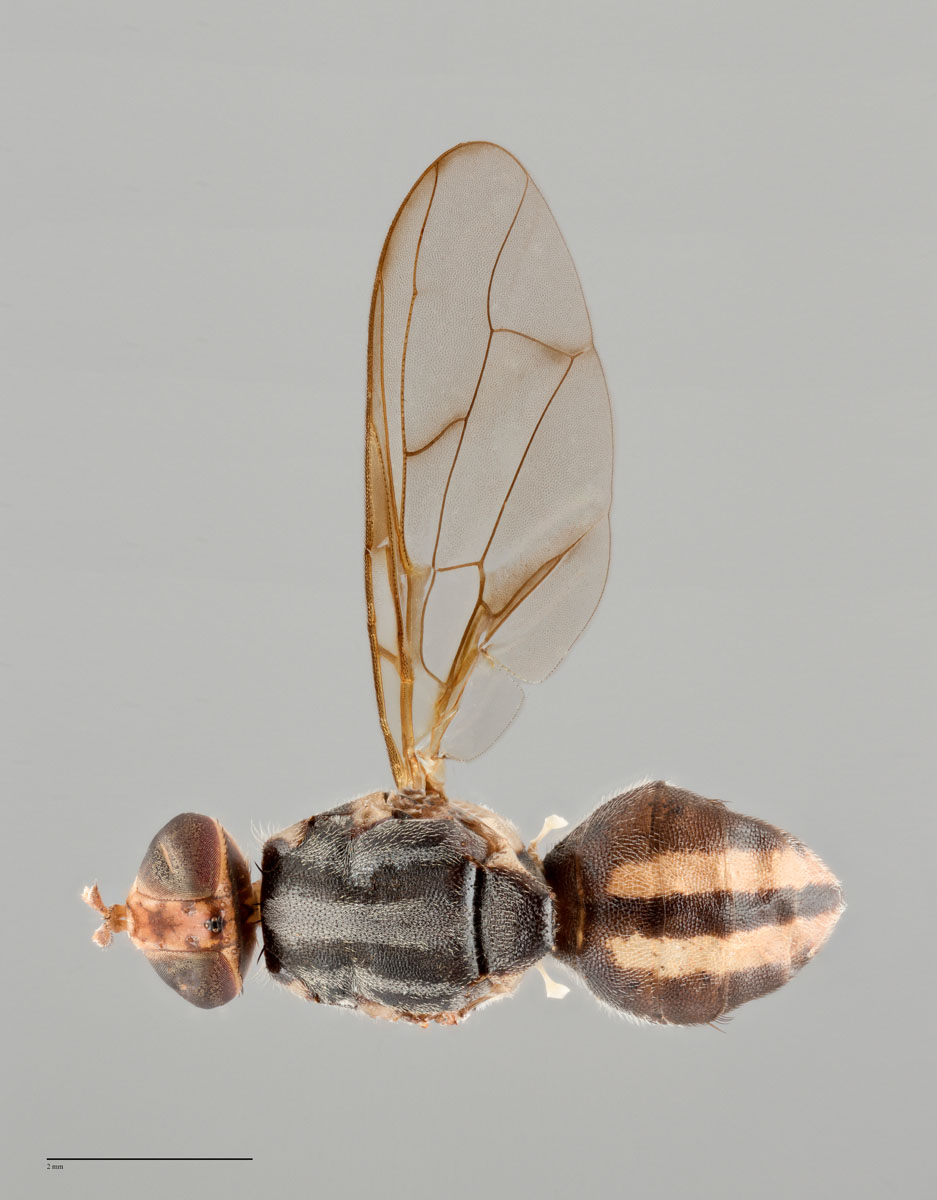 link
linkBactrocera kirki - Entire Body Dorsal with Wing KIR001 Classic
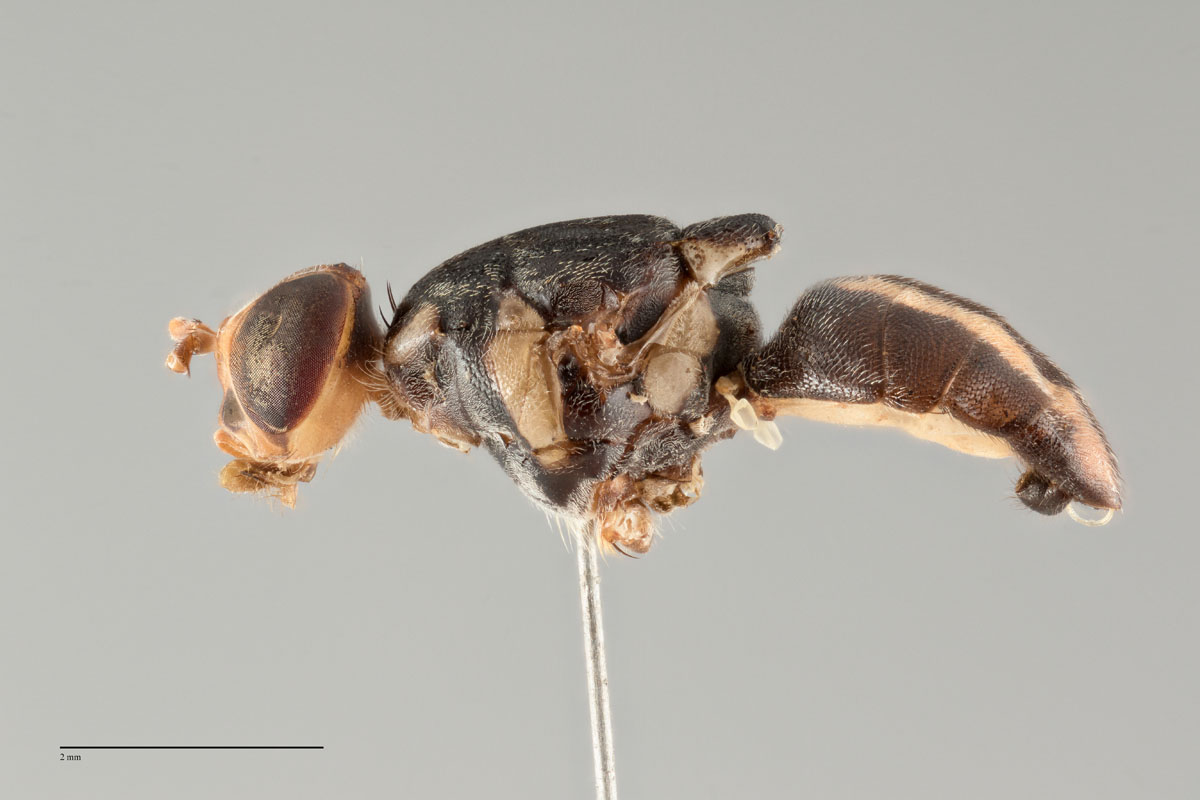 link
linkBactrocera kirki - Entire Body Lateral KIR001 Classic
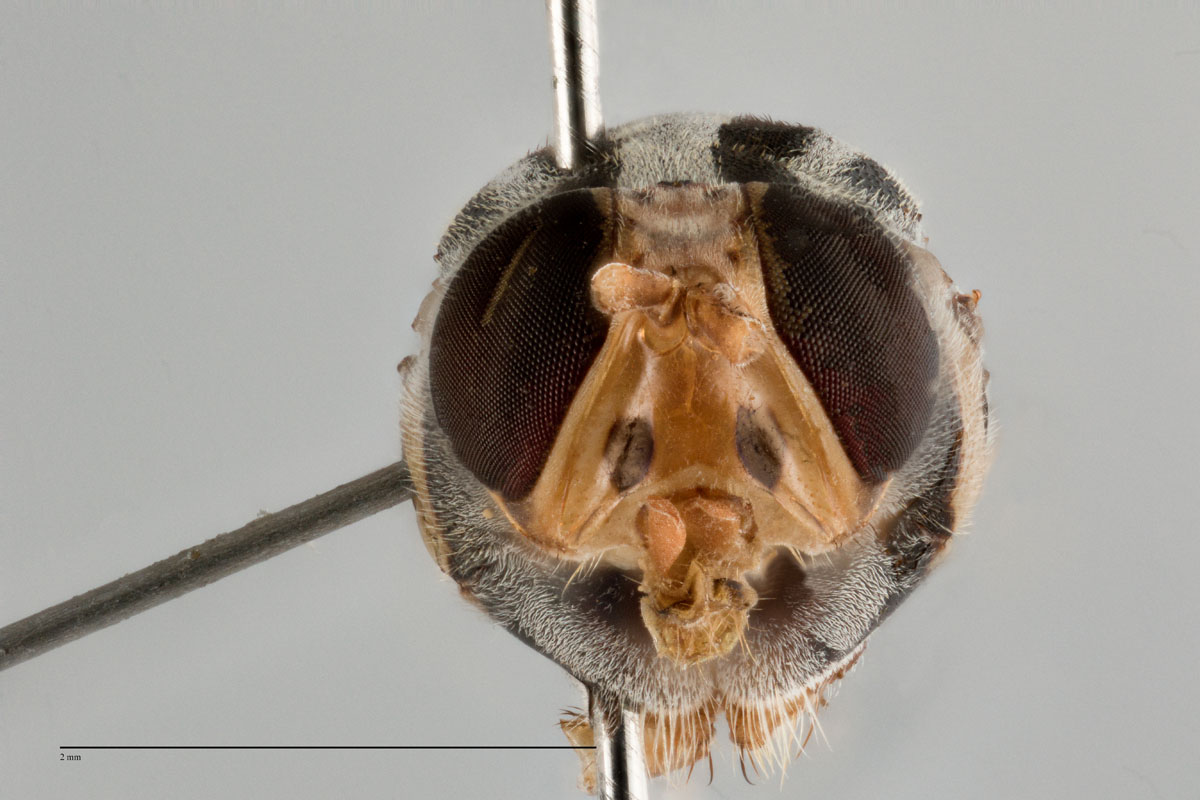 link
linkBactrocera kirki - Head Shot KIR001 Classic
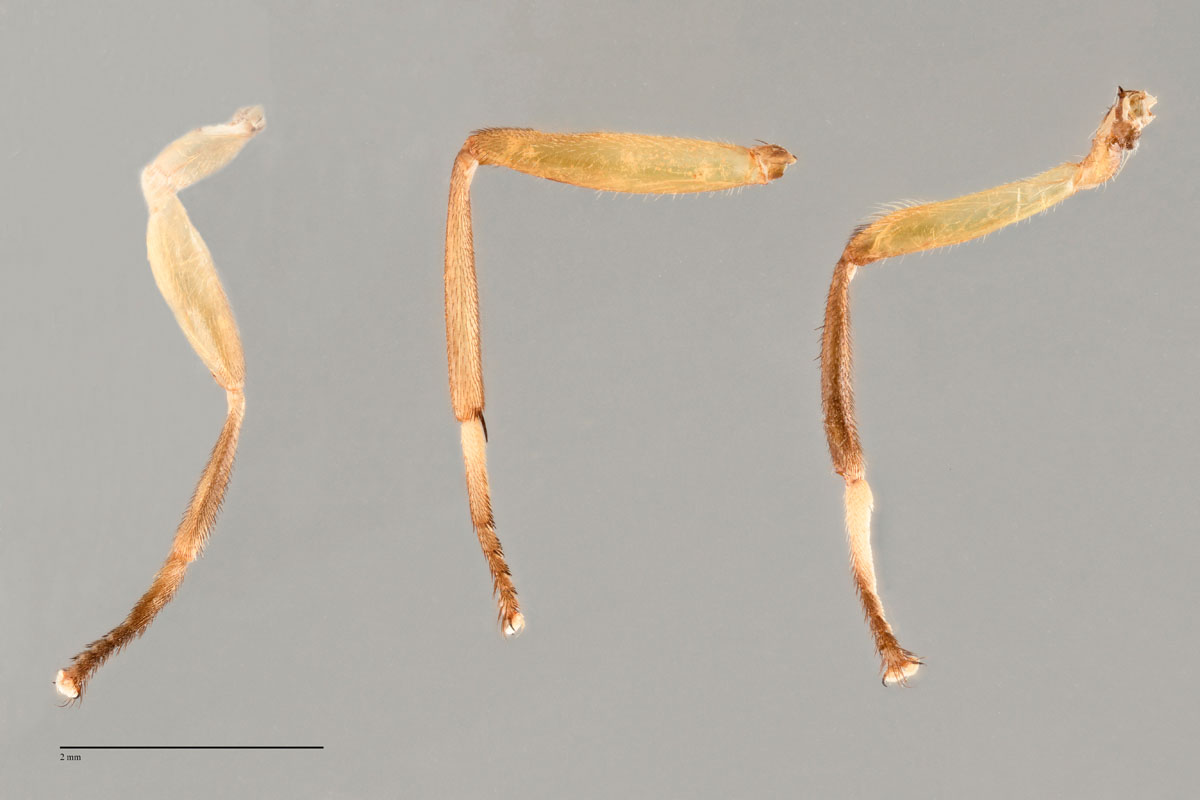 link
linkBactrocera kirki - Legs KIR001 Classic
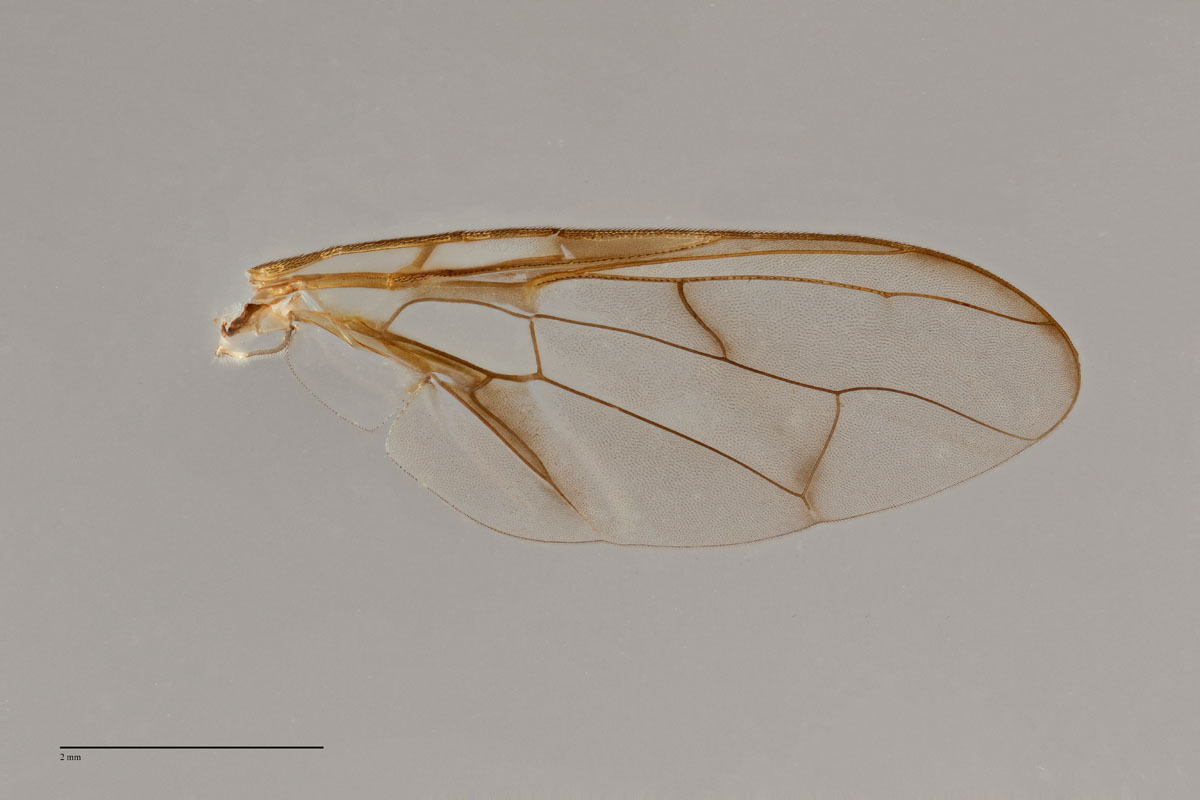 link
linkBactrocera kirki - Right Wing KIR001 Classic
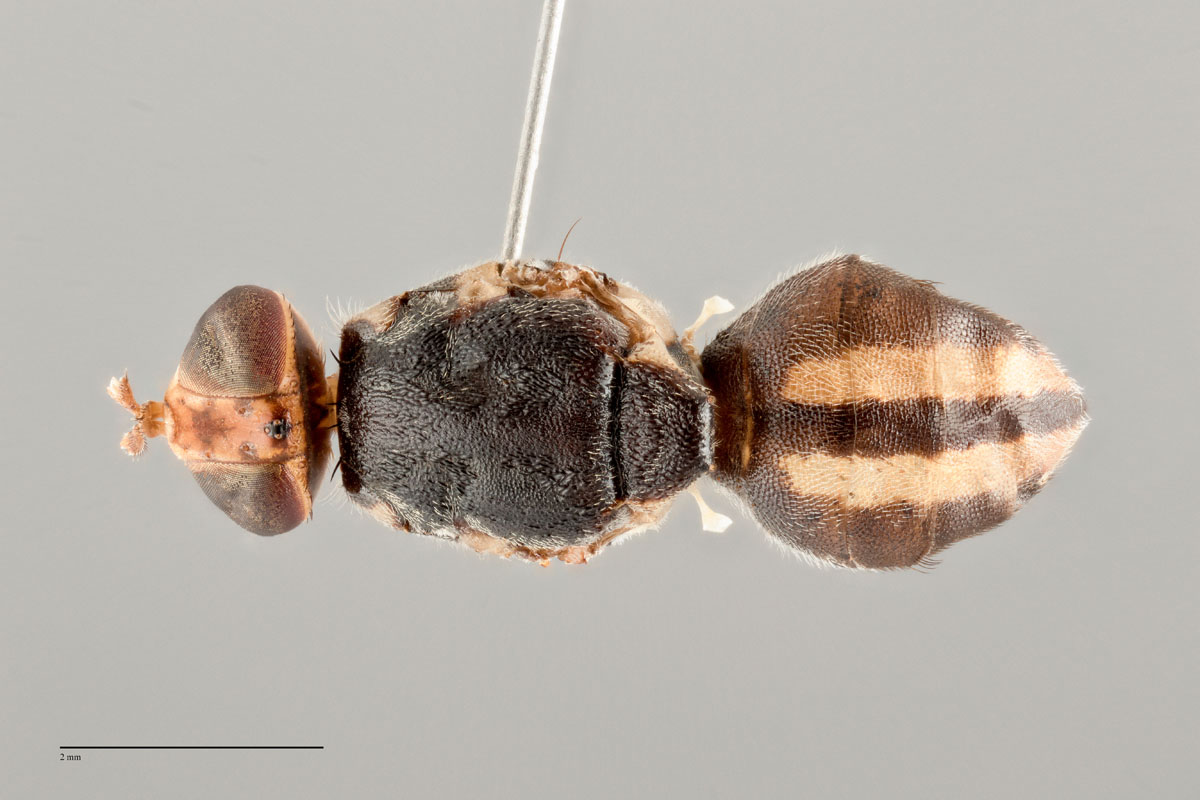 link
linkBactrocera kirki - Scutum Pattern KIR001 Classic
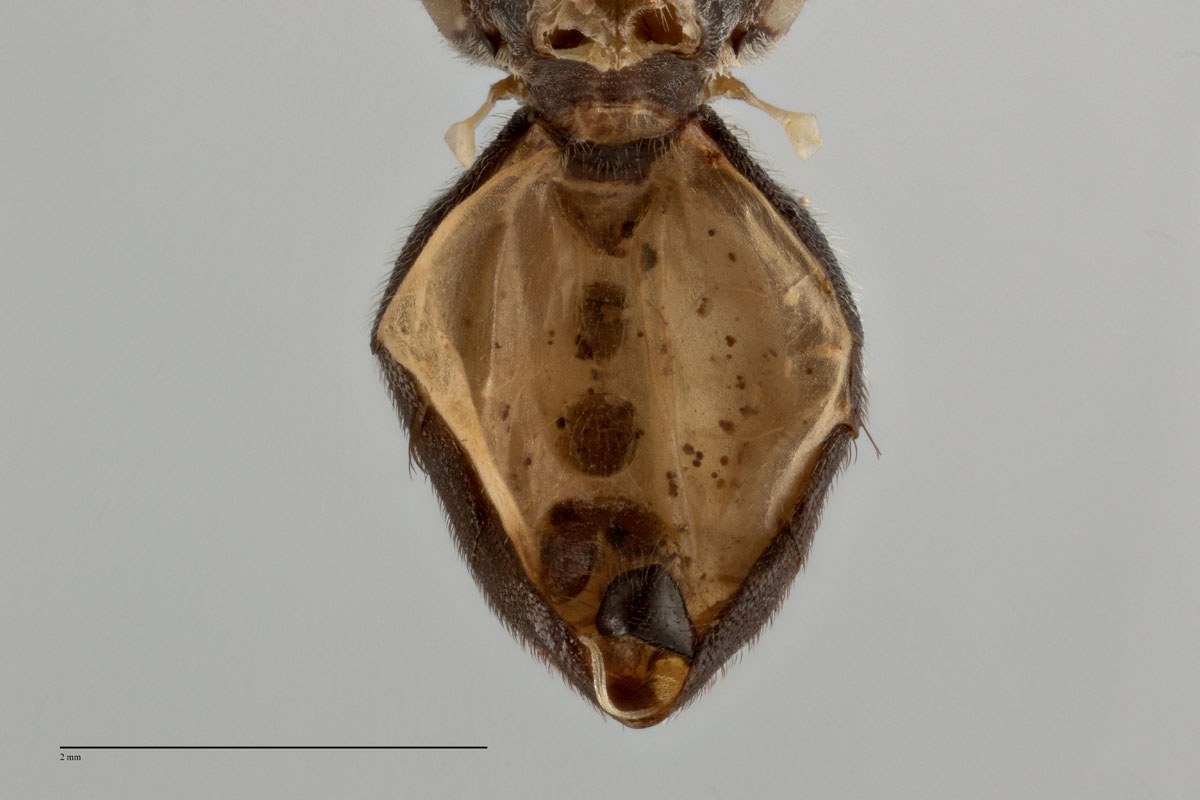 link
linkBactrocera kirki - Ventral Abdomen KIR001 Classic
Host Range
Bactrocera kirki has been recorded on 40 hosts from a range of families including Anacardiaceae, Bromeliaceae, Combretaceae, Fabaceae, Myrtaceae, Oxalidaceae, Passifloraceae, Rosaceae, Rutaceae, Solanaceae (for a full list of recorded hosts see Leblanc et al. 2012).
Major commercial hosts (Leblanc et al. 2012):
- Mangifera indica (mango)
- Psidium guajava (guava)
- Citrus species (citrus)
- Persea americana (avocado)
- Syzygium species (edible Syzygium)
- Averrhoa carambola (carambola)
- Carica papaya (papaw)
- Annona reticulata (custard apple)
- Passiflora edulis (passionfruit)
- Morinda citrifolia (noni)
- Pouteria caimito (abiu)
- Capsicum annuum (sweet pepper)
- Solanum lycopersicum (tomato)
- Solanum melongena (eggplant)
Distribution
OCEANIA – Western Samoa, American Samoa, Fiji Islands (Rotuma), Tonga, Wallis & Futuna, Niue and Tahiti (Leblanc et al. 2012).
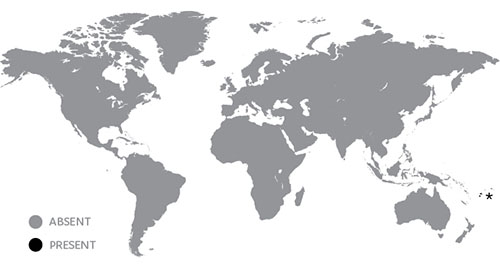
Similar species
Bactrocera kirki is similar to members of the B. frauenfeldi complex but differs in not having a distinct transverse band on the wing, although it has infuscation on the r-m and dm-cu cross veins.
Apart from lacking the wing band it is similar to:
- B. frauenfeldi but lacks vittae, has yellow ppn lobes, has a black scutellum with yellow margins, and very thick medial line on abdomen.
- B. albistrigata but lacks vittae, has a black scutellum with yellow margins, and very thick medial line on abdomen
- B. trilineola but has facial spots (instead of a mask), yellow ppn. lobes
It is similar to B. psidii but lacks vittae, has a wide black band on the scutellum (instead of a triangle) and has 2 yellow longitudinal bands on the abdomen. See Bactrocera frauenfeldi complex and similar species for other separating characters.
Pest Status
- Exotic
- Bactrocera kirki is considered a major pest, and perhaps the most significant in the South Pacific region
Attractant/Lure
Cue lure
